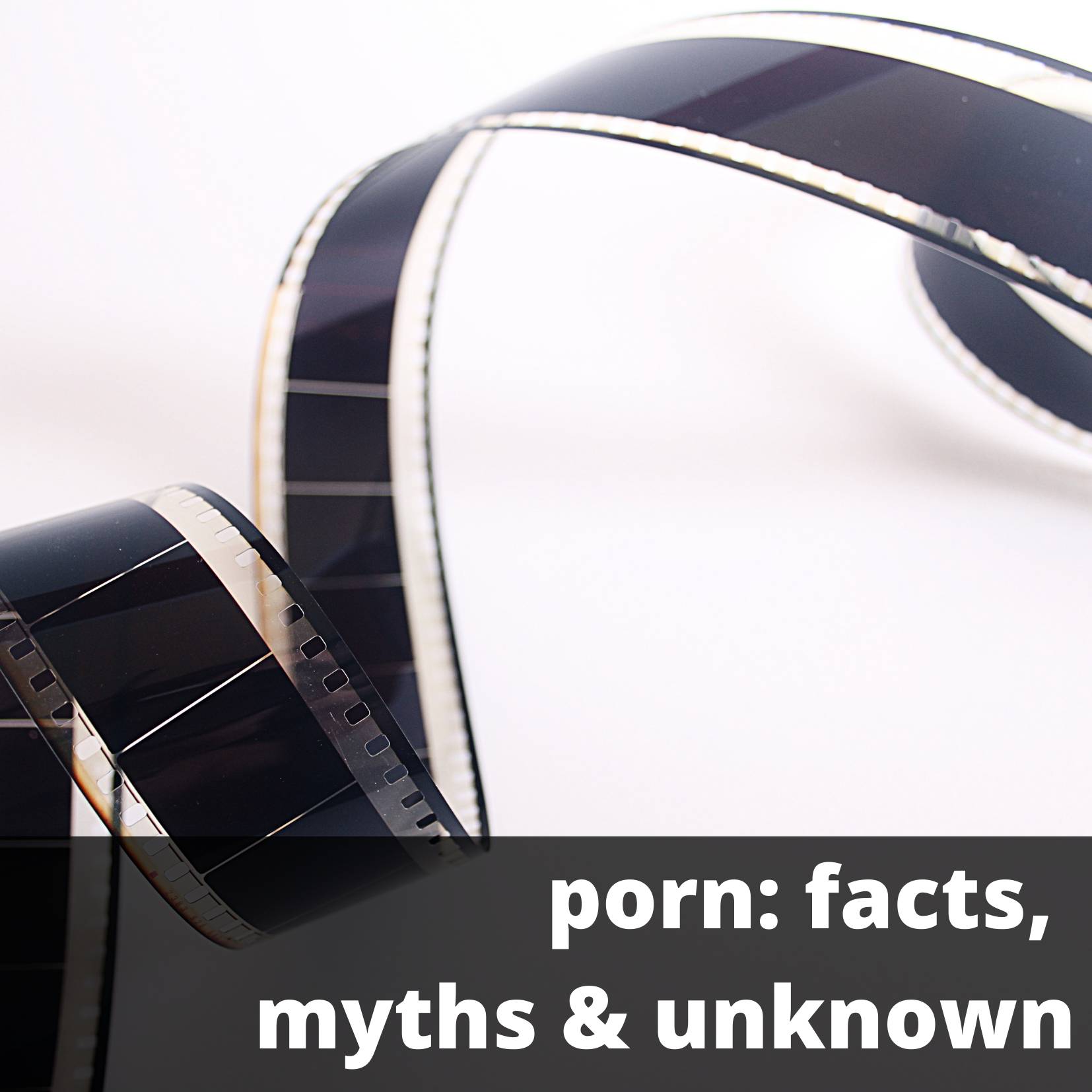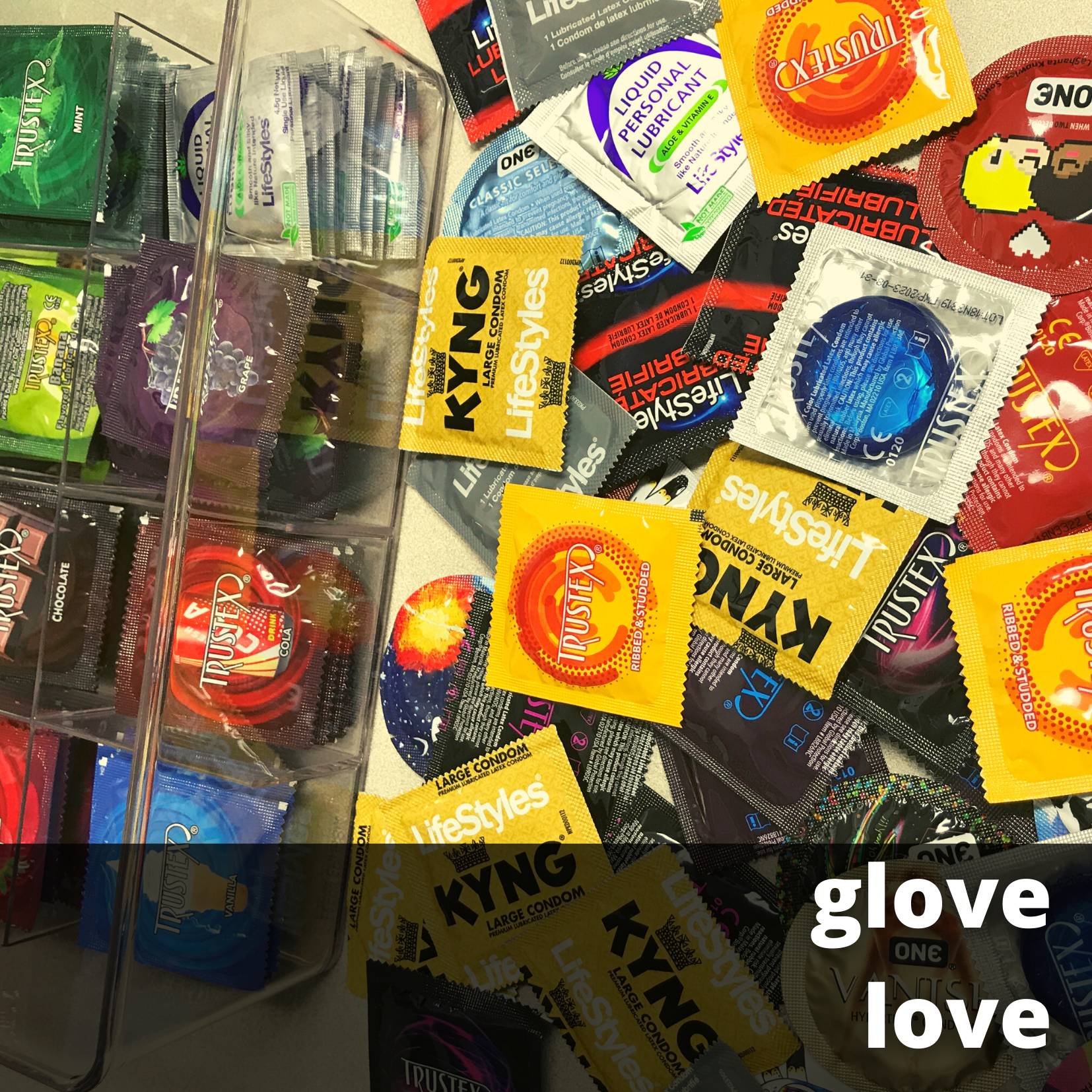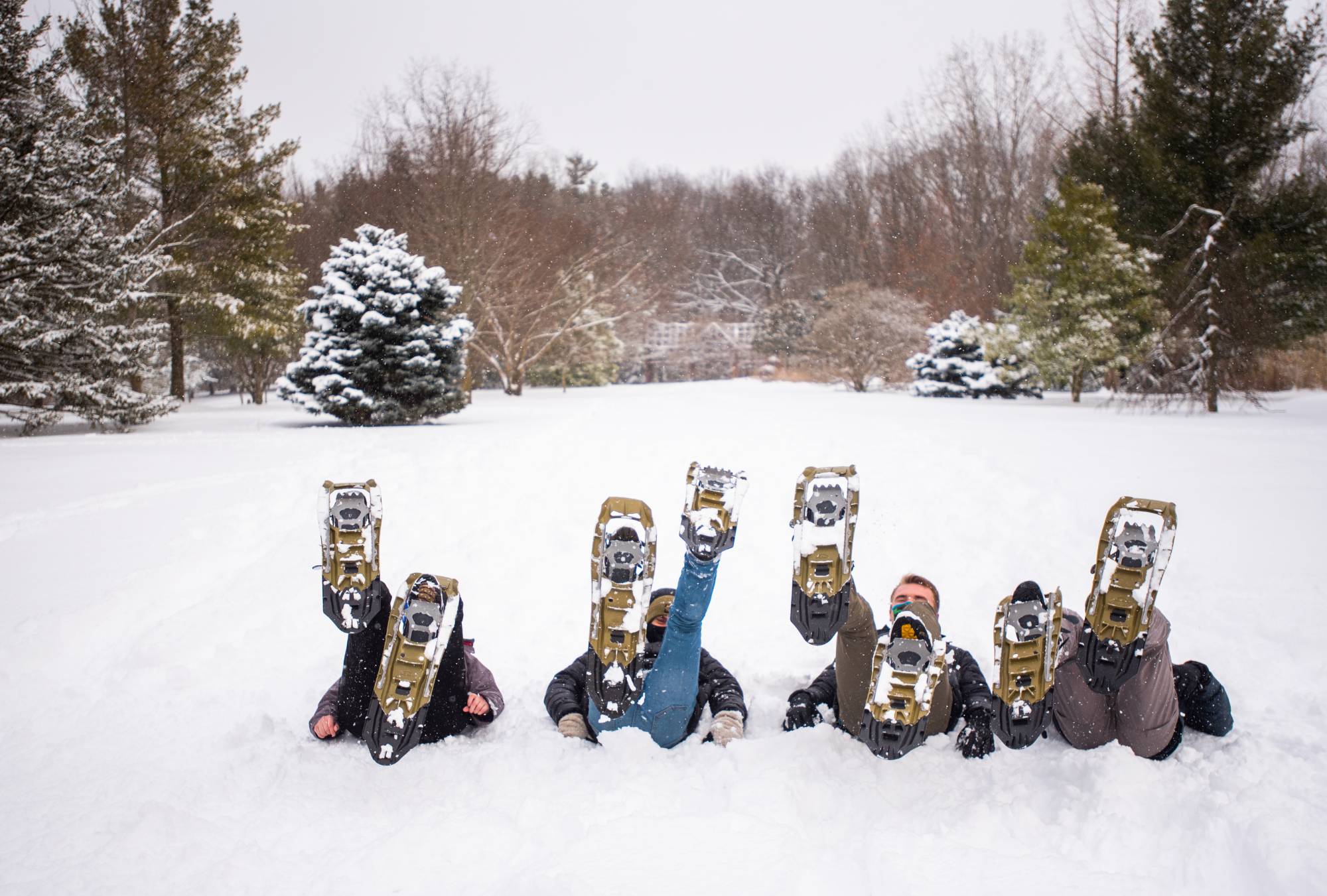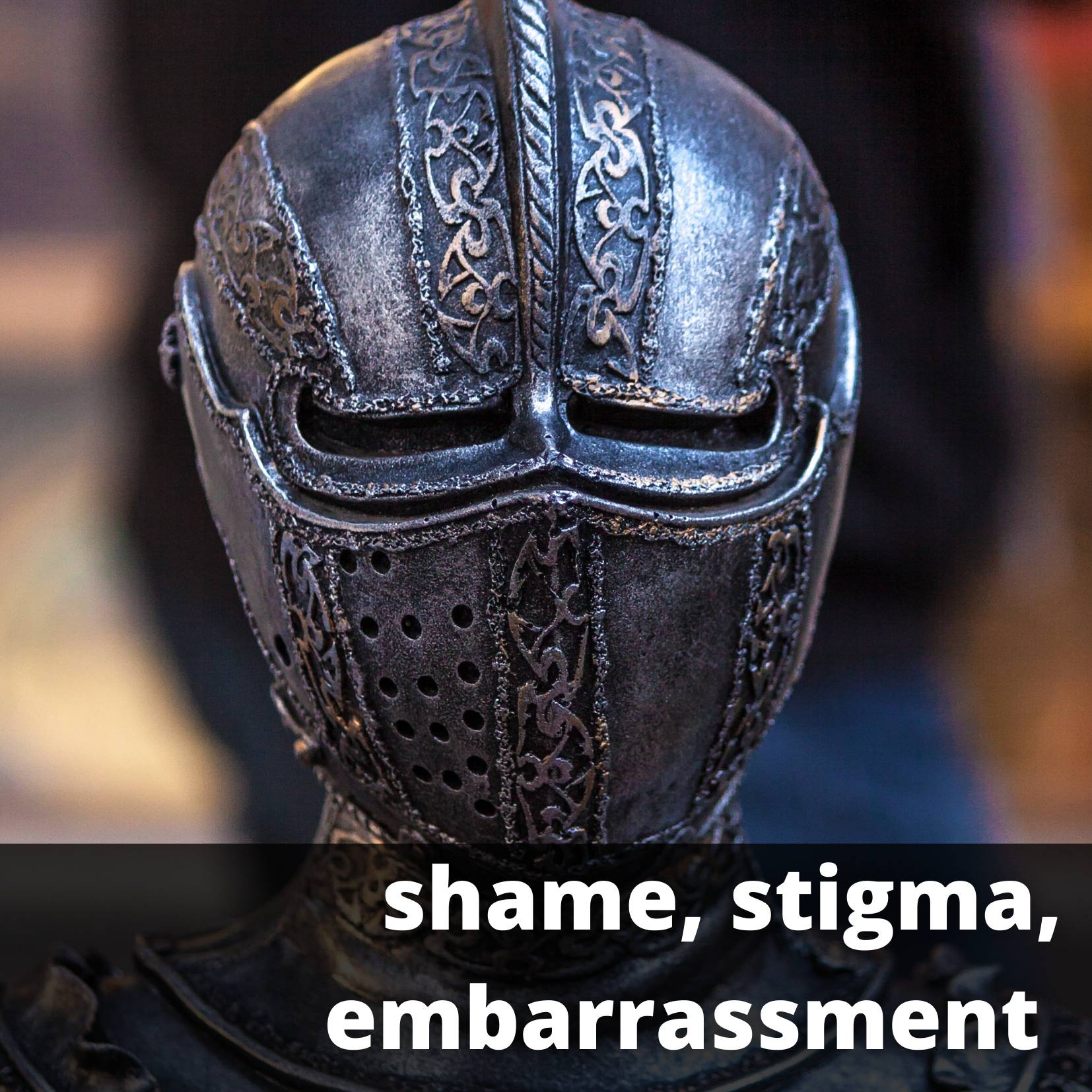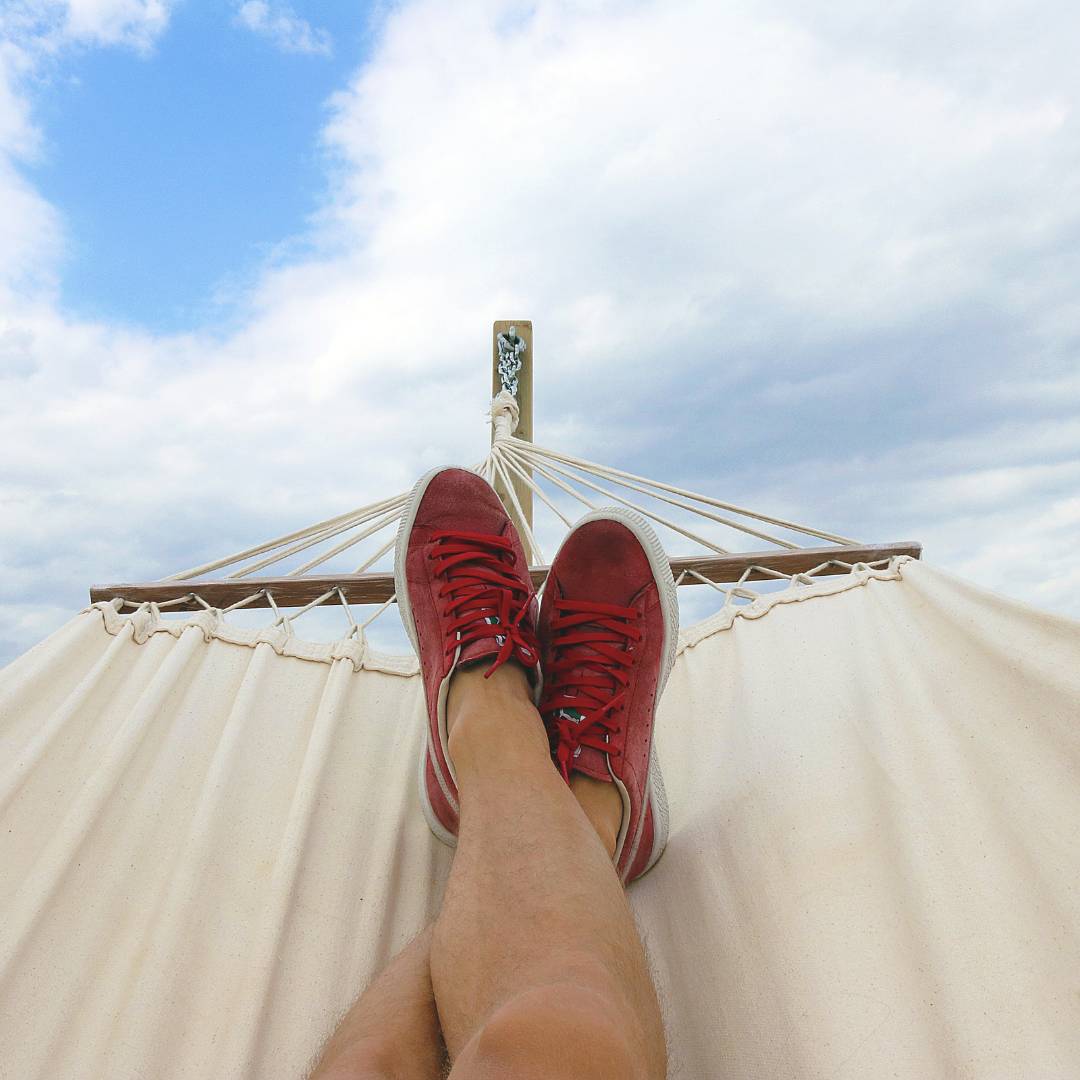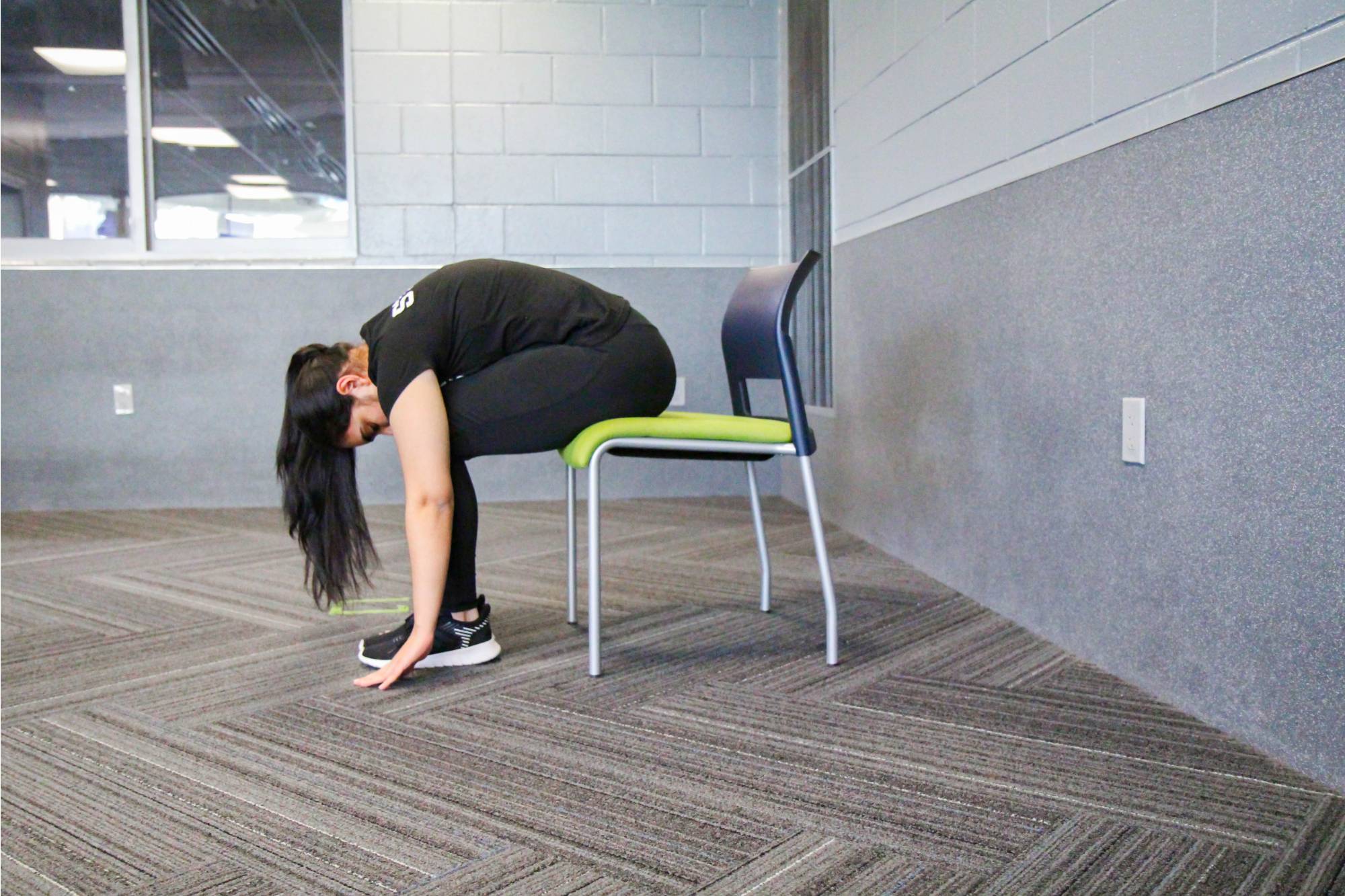Blog
Permanent link for Foreplay, Orgasm and Self-Pleasure on February 16, 2021
Part of our Sex Ed Series
Let’s talk about “The Big O.” Sex is supposed to be pleasurable for everyone involved and with some practice, exploration, and communication between you and your partner(s), you can make sex feel amazing, and increase your chances of an orgasm (but know, that doesn’t have to be the goal of sex). Many people say the “Big O” will feel like fireworks exploding throughout your body, and you can make it happen in LOTS of different ways. You or your partner(s) might not reach orgasm during every sexual activity, which is totally normal, but there are ways to be sure that the experience is still filled with pleasure!
Foreplay
When it comes to sex, there’s
a lot more to it than just penetration. No matter who is
involved, foreplay can be necessary for a good time! Typically,
foreplay is anything that happens before intercourse: think kissing,
massaging, fondling, eye contact, dirty talk, etc. Foreplay helps warm
up your bodies for the fun to come - physically, mentally, and
emotionally. This is the time to build up the sexual tension and
desire between you and your partner(s) to have the best, most
pleasurable sexual experience possible. For people with a vagina,
engaging in foreplay creates a natural vaginal lubricant for better
sex, and to help get to the arousal level necessary for orgasm. For
people with a penis, foreplay stimulates the body in preparation for
sexual activity. Foreplay really is a win-win for everybody involved!
But, foreplay doesn’t have to lead to anything more. Sometimes, you
and your partner(s) will feel satisfied enough by your other sexual
activities to stop before intercourse ever occurs. (That’s why a lot
of people use the term “outercourse”
instead of foreplay… because it’s fun all on its own).
Orgasm and Erogenous Zones
For everyone involved, foreplay on its own can get you to reach
orgasm. For people with a penis, an orgasm is pretty obvious. At the
climax, the penis ejaculates semen, and the body is filled with the
feeling of ecstasy. This orgasm can happen through penetrative sex, as
well as blowjobs, hand jobs, prostate stimulation, nipple
play--anything you like that gets you turned on! As for people with a
vagina and clitoris, an orgasm is not always as noticeable. Blood
flows to the clitoris to become erect just like in a penis, and
requires similar stimulation as well. Among professionals, there’s not
a set definition for this kind of orgasm, but the most common
explanation is just the feeling of “fireworks.”
The feeling flowing through your body during an orgasm can leave you
screaming for joy or sighing of relief. If you’ve never reached
orgasm, or are unsure if you have or not, try out new techniques and
explore your body to find what feels good to you! When you finally get
to the Big O, you’ll know it. Your body is covered in zones that
stimulate sexual feelings, so be sure to feel around.
Those specific places on your body that feel extra good to touch are called erogenous zones . Some popular spots are the ears, neck, nipples, inner wrists, the vaginal or penile region, and inner thighs, but to ensure your best experience, experiment with yourself or your partner(s) to find your favorites. Everyone has different erogenous zones on their body that feel good, and when you know your own, you don’t even need a partner to reach the sweet bliss of an orgasm.
Solo Sex
If you’re not involved with a sexual partner, that doesn’t mean
you shouldn’t get to experience sexual pleasure on your own (if you
want to). Masturbation is a safe and fun way to stimulate your body to
an orgasm without having to rely on someone else for arousal. Despite
masturbation having a stigma
surrounding it, it's a completely normal and healthy thing to do for
people of all genders. Touching
yourself in the comfort of your own home is the best way to
explore your body and find what you like (or don’t)! Masturbation is
not only a fun way to pass the time, but it lets you take your sexual
pleasure into your own hands--literally!
Toys
Whether you’re being intimate with your partner or having a solo
sesh, sex
toys are a great way to add some spice to life! Before buying
toys, it's important to know what places and techniques you enjoy when
masturbating so you know what kinds to get. If you have a vagina and
find pleasure from penetration, you may want to try different types of
dildos.
Or if you prefer clitoral stimulation, vibrators could be a good
choice for you. For people with a penis, popular toys are different
kinds of sleeves and penis rings. People of all genders can also enjoy
anal stimulation in sex and masturbation, so toys like butt plugs,
anal beads, and dildos are perfect for some backdoor action (but be
SURE that whatever toy you put into the anus has a flared base to
avoid it getting stuck!). And, don’t forget, no matter the toy, you
should always
clean it!
Hard Time Reaching Orgasm?
As I mentioned, sex should be a fun time for everyone, but
sometimes your
body can have a difficult time reaching orgasm, and that is
totally normal! Differentiating sexual pain from a lack of pleasure
is important in these times. If you feel any discomfort or irritation,
you might want to consider making an appointment with a health care
provider to see if this uncomfortable feeling is caused by any kind of
health concern. (Also, we have a blog coming up about pain with sexual
activity, so stay tuned!)
If you aren’t experiencing pain, but sex still just doesn’t feel good, even after foreplay and different types of stimulation, you should have a conversation with your partner(s) about what you’re feeling. Your mindset is just as important as stimulation when it comes to sex, so communicate your needs, try to relax, listen to your body, and be in the moment to help your chances of a big finish. When having any type of sexual relation with another person, the expectation tends to be that it ends with an orgasm for everyone, but that’s often not the case. So remember: while pleasure should still be important, orgasms do not have to be the end goal in any sexual encounter. Our bodies are complicated things, so be sure to listen to what you’re feeling in the moment.
The Grand Finale
Sexual pleasure is about understanding your own sexual needs, and
knowing the right ways to satisfy them. There is no “right” way to get
to an orgasm, so it's all up to what you enjoy. Whether you’re a
sexpert or newbie, take some time for yourself to explore these sexual
desires--your body will thank you!
By: Camryn Lane, WIT Peer Educator
Categories:
Sexual Health
Posted
on
Permanent link for Foreplay, Orgasm and Self-Pleasure on February 16, 2021.
Permanent link for Porn: Facts, Myths, and Unknown on February 10, 2021
Part of our Sex Ed Series
When we say “porn”, we’re talking about any type of sexually explicit media that shows either nude or partially nude people. It can be magazines, tv shows, films, online videos, etc. Pornography has always been a controversial topic, and because some of the research has conflicting conclusions, it’s hard to really understand whether it’s more beneficial or harmful for us. When we read news such as how seventeen US states have declared pornography as a “public health crisis” since 2016, it automatically influences our opinion of it. But when we take a closer look at the resolutions and see that not all of the claims are evidence-based, it might change our opinion of it again. What we do know, based on research, is that the majority of people who watch porn report that they do not experience any substantial problems because of it, although there are certainly people who are negatively affected by it. So, let’s look at some of the facts, the myths and the unknown.
Access to Porn
With the internet more accessible than ever before, porn has also
become much more accessible. The age of first exposure of
hardcore porn is as young as 8 to 11 years old, which is especially
concerning since many children this young have not had proper,
comprehensive sexual education yet. Pornography is NOT sexual
education (though
1/4 of young adults list it as one of their top “sources” of sex
education)- it’s just a fantasy like all other fiction movies. In
one
study, researchers found that 76.5% of college students reported
accessing online sexual entertainment. Pornography websites such as
Pornhub are free and accessible to anyone with the internet; Pornhub
gets as many as 115
million visits each day. The concern is what the porn is
modeling. Many videos influence body image perceptions - they might
cause unrealistic expectations of what people’s bodies are “supposed”
to look like. Some people might feel like they need to change how they
look, like shaving their body hair or going as far as plastic surgery
(there has been a 600%
increase in labiaplasties since 2011). Porn often doesn’t model
safer sex practices (like wearing condoms). Also, you do not need to
practice getting consent when you watch porn, and most of the time the
actors in the videos don’t ask for consent either. A lot of things to
be mindful of when deciding which video to watch!
This is why it is important to know whether the porn you’re watching is ethical or not. Ethical porn is porn that was produced legally, where all parties involved give their consent, and the actors are appropriately paid and credited for their work and are of legal age (18 years old). Also, they should have safe and comfortable working conditions and be routinely tested for STIs. While sites like Pornhub may be easy to access, they can have issues like uploading videos of rape and revenge porn (porn that is posted typically by a former partner, without consent of the person in it). In some cases, Pornhub even refused to take some of these videos down. The search term “teen” was the 12th most searched for term on Pornhub, which makes you question how many of the teens portrayed are actually of age to give consent (can vary by state) or legal age to appear in pornagraphic material (18 years old). Typically, if the porn is free, then there’s a good chance it wasn’t ethically made. Sites like Onlyfans allow the creators to have control over who sees what.
Porn on the Mind
Did you know that watching porn can actually affect the anatomy
of your brain? Crazy, right? This is something that science actually
supports - a
study in 2014 found that watching more porn can shrink part of
your brain that is associated with pleasure. For all my anatomy and
physiology friends - we’re talking about the striatum,
which is a part of the brain’s reward system. This means that those
individuals might feel the need to watch even more porn in order to
become aroused - what used to get the job done in the past might not
cut it for them anymore. Some
college students report the need for longer stimulation (12% of
participants) or more sexual stimuli (17.6% of participants) in order
to orgasm.
Another concern about pornography related to the brain is addiction, since it has been shown to mirror the way drug addiction works. There is definitely evidence that those who have sex addiction (being so obsessed with sexual thoughts/urges/behaviors that it causes distress in your life) are more likely to desire and use porn, however it less clear whether porn itself can cause addiction. With that being said, a study that focused specifically on university students found that 15.5% of participants perceived themselves as addicted to porn. Also, 3-16% of people worldwide report compulsive porn use. Porn gives you pleasure on-demand without having to make a connection with another person, which is why it’s used so much.
Violence and Negative Attitudes toward Women
A lot of people worry that porn encourages sexual violence, since
there appears to be an increase in that type of content (in 2010,
researchers found that over 88% of the 300 porn scenes they analyzed
included physical
aggression, typically with male perpetrators). However, research
does not support the idea that pornography contributes to an overall
increase in sexual assault. Also, recent
research indicates that having a higher risk of committing sexual
violence (an intentional choice to cause harm) because of watching
porn, is only apparent in the minority of men who are predisposed to
sexual violence. While men may be more likely than women to commit
sexual violence, they have equal
likelihood of being a victim. Men are more likely to be a victim
of sexual violence than a perpetrator themselves.
However, when researchers examined how porn affects attitudes toward women, they found that men who had low agreeableness (which means how helpful/trusting/sociable someone is) and who watched more porn have more negative opinions of women, such as feeling hostile toward them. It’s also important to recognize how people, especially women and people of color, are fetishized in porn. Pornhub’s 2019 list of most searched terms include “japanese”, “hentai”, “lesbian”, “milf”, “korean”, “asian”, and “step mom”. The type of porn people frequently watch can affect how they view (and interact with) people in real life.
Relationships and Porn
When it comes to sex life within heterosexual relationships, research
shows that porn has a different affect whether individuals watch
it alone or together with their partner. Those who watched it alone
reported feeling less dedicated and less sexually satisfied than the
couples who watched porn together. There also appears to be a
difference between genders with how
porn is used. More men reported using porn for solo
masturbation, whereas more women reported using it as a part of having
sex with their partners. This led to men feeling more dissatisfied
with their sex life compared to the women in the study.
Unfortunately, a lot of the research that has been done focusing on how pornography affects relationships is conflicting and tends to only focus on heterosexual couples. In the past, it was believed that if men watched porn, then they would be less interested in their wives. However, more recent research (which had ten times as many participants) did not support this concept. They found no difference in how much individuals were attracted to their partners after looking at porn. But this study is also in conflict with other recent studies - like one that found watching porn to be a predictor of divorce. Their results showed that people who were at the highest risk of separating with their partners were the ones who watched porn two to three times a month. There might be reverse causality at play here, however, because researchers were unable to determine if the individuals watched porn because they were already unsatisfied with their marriage, or if the act of watching porn was what caused the marital issues. The weird thing about this study was that they found those who watched porn at least everyday had a lower risk of divorce compared to those who had never watched it. So basically, science has not given us a clear answer yet about how pornography affects marriages.
Potential Benefits of Porn
Porn can be beneficial in some ways. As stated earlier, partners
who watch
it together can feel more dedicated to their relationship and
more sexually satisfied. It can give them new ideas of what they might
enjoy in bed. Porn can also reduce risks from sex (like STIs) if
individuals are masturbating by themselves rather than having sex with
others. Masturbating is normal and healthy, and it can help you
understand your body better. Watching porn can help some individuals
feel more
empowered and less
stressed. Porn can even help with destigmatizing sex. The goal is
to have safer and more pleasurable sexual experiences, and if watching
(ethical) porn helps you do that, then that’s what matters!
So, what’s the verdict?
Is porn good or bad? Well, that’s really up to you to form your
own personal opinion about - you can decide for yourself whether or
not you want to incorporate it into your sex life. The research about
porn shows that while mixed, overall, most people don’t experience any
substantial negative effects from it, but of course nobody knows you
like yourself! You can understand how it affects yourself personally
and make your decision based on that. Does it make you feel better or
worse about yourself or other people? Does it align or go against your
personal beliefs or values? Is it affecting your relationships in any
way? Do you feel more sexually liberated from it? If you do choose to
use it, make sure it’s from ethical sources and that you still engage
in safer sex practices!
By: Ryleigh Emelander, RecWell Health Promotion Assistant and WIT Peer Educator
Categories:
Sexual Health
Posted
on
Permanent link for Porn: Facts, Myths, and Unknown on February 10, 2021.
Permanent link for Glove Love: A Crash Course on Condoms on February 1, 2021
Part of our Sex Ed Series
Happy National Condom Month!
Condoms and protection can be an awkward topic to discuss for a lot of people, especially undergraduate college students. As sex continues to be a taboo topic in society, many people do not get proper education about protection or sexual health before heading to university. Freshman students, finally free of the restrictions that living at home can bring, get the opportunity to meet new people and gain new experiences if they want, whether it be sexually or in general. Which is awesome! But, the idea of walking into the C-Store at Kleiner and picking up some Trojans with your dining dollars, can be pretty uncomfortable for some, (I’d say most) students. Thankfully, Recreation & Wellness partners with the Ottawa County Department of Public Health to provide condoms through Wear One. Condoms can be found in several offices all around campus for students to pick up - for free!
What Are Condoms?
Before you head off to pick up your free condoms, it is important
to understand what condoms are, and why they are important, so you
know what is best for you. In penile/vaginal intercourse, condoms act
as barriers that keep sperm from meeting the egg. Condoms not only
shield away the swimmers and prevent pregnancy, but can also be used
in several sexual activities (oral, anal, vaginal, use with toys) to
protect from most sexually transmitted infections (STIs) like
chlamydia and gonorrhea. For this reason, they are known as barrier
methods. Safety is sexy, so finding the right condom for you and
your partner(s) is vital!
Types of Condoms
There are many different types of condoms. No matter who you are,
or how you and your partner(s) identify, there is a condom for you.
There are two main types of condoms: condoms for the penis (external
condoms), which cover the shaft of the penis or toy, and condoms for
the vagina (internal condoms), which are inserted into the vagina and
stay within the vaginal canal. Under this umbrella, there are a wide
variety of “specialty condoms” of each type, including:
- Your standard smooth, non-lubricated latex condoms- For the times you want to keep it classic.
- Polyisoprene (No Latex/Latex-free/Non-Latex) Condoms- If you or your partner(s) have a latex allergy, this one’s for you!
- Glow in the dark- To bring in a little disco or laser tag aesthetic to your activity.
- Flavored Condoms- To add some extra flavor to oral sex.
- Studded/Ribbed Condoms- For extra stimulation and fun!
- Warming Condoms- For those cold winter nights (and to add additional sensory stimulation)
- Colored Condoms- To bring some color into your sex life!
- Edible Condoms- Feeling hungry, no worries! Bon appetit! (These condoms are for novelty only! They do not provide protection from STIs or pregnancy)
**Be sure to check for FDA approved condoms to ensure efficacy of condoms. As mentioned, there are some novelty condoms that do not protect against STIs or pregnancy.
Do It Yourself Dental Dams
Unfortunately, not all barrier methods are easily available.
Dental dams, for example, are stretchy sheets made of latex or
polyurethane plastic, that protect you during oral sex. To put it
simply, dental dams are dam hard to find. Do not fret! With
the magical powers of DIY, scissors, and a male/female condom of your
choice, you can make a DIY dental dam in 3 easy steps!
- Unwrap and unroll the condom of your choice.
- Cut off the tip and the rim of the condom about ½ an inch (or to your desired length). This should create a cylinder with two open ends.
- While carefully holding the condom open, cut down the length of one side to create a square shape.
And BAM! DENTAL DAM!!
The Condom Conversation
When it comes to sex, open communication
is KEY, so it is important to start a conversation about using
condoms with your partner(s). If you can, having a chat about
contraception before you are in a situation where you would need a
condom can help make sure everyone involved is on the same page. This
is also a great opportunity to set boundaries with your partner(s)!
During this conversation, you get the opportunity to voice your condom
preferences and boundaries, as well as hear your partner(s) needs. Pro
Tip: bringing your own condoms keeps you prepared and ready for
anything. Whether it be sexual activity or a spur of the moment water
balloon fight, condoms have got you covered!
Free Condom Locations
In a partnership with the Ottawa County Department of Public
Health, Recreation & Wellness is able to provide condoms
for free at locations all around the Allendale (and
soon, Pew and Health) campus. Condoms
can be found in person at the several locations. If you are not
on campus or cannot make it to one of the condom locations, you are
able to order condoms by mail (still for free! yay!). As long as in
person classes continue, condoms by mail are still available. If you
live on campus, fill out this form
to get condoms shipped directly to you! If you do not live on campus,
no worries. The Ottawa County Department of Public Health will mail
you free condoms if you live in Ottawa or Allegan counties. If you are
feeling shy and don’t want parents, guardians, or roommates finding
out, you're in luck! The condoms are sent in a discreet envelope. You
can visit the Ottawa
County Public Health website for more information.
Wrap Up
Educating yourself on condoms and creating an open conversation
with your partner(s) can make sex not only more safe, but more
enjoyable for everyone involved. As sex continues to be an often “off
limits” topic in our society, it is up to us to create a healthy
environment to discuss sex, and the things under its umbrella. So the
moral of the story is, save those dining dollars for what they are
really for, snacks! RecWell wants students to have all the tools they
need for safer sex, so utilizing the services on campus (if interested
in engaging in sexual activity) is an easy, no shame way of getting
what you need. In order to participate in the conversation and gain
additional knowledge, there are several websites where you can learn
more about the different types of condoms, or sex in general. We have
an entire sexual
health page you can browse for more information. If you have any
questions, comments, or want peers to talk to, reach out to the Sexual
Health Peer Educators using AskWIT.
PS. Want to learn more and have fun?
Join us for Condom
Palooza, Tuesday, February 16, 2021 from 7:00pm - 8:00pm.
Registration closes on Wed, Feb 10.
By: Annie Seeber, WIT Peer Educator
Categories:
Sexual Health
Posted
by
Kayla Grice
on
Permanent link for Glove Love: A Crash Course on Condoms on February 1, 2021.
Permanent link for A World of Constant Distraction on January 29, 2021
Picture this: You’re on the bus heading to class,
walking at the park, or waiting in line at the grocery store.
What do you notice? Every time I look up, it seems
like everyone around me is on their phone. Sometimes texting,
sometimes talking on the phone; but, usually just clicking from app to
app to pass the time. Then, I usually look back down at my own phone -
feeling guilty - but doing it anyway because everyone else is and I
need a distraction. I think about all the times my mom would say
things to me like “you probably have a headache from being on that
phone all the time” in high school; and, while it annoyed me at the
time, there’s probably some truth to that. I can’t help but wonder how
it has really affected me growing up with technology and constant
opportunities for distractions around me all the time. You might have
wondered this too, so I decided to do the research so you don’t have
to! Here’s what I found:
How Does it Affect Me?
- Some studies have shown that students not using their phone in the class wrote down 62% more information in their notes, were able to recall more information, and on average scored a full letter and half grade higher on an exam compared to those on their phones.
- Excessive phone and internet usage is also linked to anxiety, which is concerning when more than 45% of teenagers report being online “almost constantly.” College students like us are following similar trends.
- Not to mention, spending too much time on the phone is actually linked to feeling more lonely - the opposite of what it is supposed to be doing.
- Americans spend an average of 7 hours on technology. These numbers are increasing exponentially.
- Constant technology usage can also cause eye strain, headaches, fatigue, and decreased creativity.
Of course, with online learning and remote work, stepping away can be difficult (and impossible to completely avoid) and not all internet usage is bad. But it’s important for us to think about when it might be best to take a break from social media to rest. But what can we do to unplug?
Unplugging
Finding some time to disconnect, even for a little bit during the
day, can improve your mood and overall health. This
article gives a few great examples of how taking time to unplug
can be beneficial. Taking time to unplug can mean different things for
different people, whether it’s exercise, journaling, meditation, or
spending time with friends and family. For more benefits about
unplugging, be sure to check out the Press Pause campaign’s page for
Unplugged,
this month’s theme. Be sure to follow us on social media at
@GVSURecWell for more information and giveaways related to
unplugging. We encourage you to take some time to rest, relax, and
find some time for yourself this month by spending some time unplugged.
By: Sofia Hessler, WIT Peer Educator
Categories:
Rest
Posted
on
Permanent link for A World of Constant Distraction on January 29, 2021.
Permanent link for Shame, Stigma, and Embarrassment surrounding Sex and Masturbation on January 26, 2021
Part of our Sex Ed Series
The world we live in conditions us to both want and fear sex, leading many people to struggle. Do they give into peer pressure and try to get laid? Do they listen to their parents and wait for marriage? And what about what they want? So much gets lost in the shame, stigma, and embarrassment surrounding sex and masturbation that sometimes we forget what it’s really supposed to be about: pleasure.
Real Fears: Facts vs Myths?
Masturbation and sex are hidden from children and teens, so much
so that we often don’t know basic facts from crazy
myths. Some of the most common questions asked by teens reference
scare tactics and old wives tales dating back centuries! Questions like:
- “Will people be able to tell that I do it?”
- “Is there such a thing as too much masturbation?”
- “Is it normal?”
- “Is it okay to masturbate?”
- “Will I go blind?”
- “How do I stop feeling guilty after I do it?”
- “...it’s easy enough for guys, but how do girls do it without seriously hurting ourselves?”
These questions show the fears and stigma surrounding sex and masturbation that teens and young adults today still hold onto. Unfortunately, these questions reflect very real fears for a lot of people and these fears can hold people back from having fun, safe experiences and being in healthy relationships. In fact, 50% of men and 50% of women who masturbate feel guilty about it; yet masturbation is a healthy and normal part of human development, and generally leads to a better sex life as well.
Sex Sells - So Why is There Stigma?
Misinformation, stigma, and shame can be propagated by the media
and the Internet, which are both endless sources of videos and
pictures of hypersexualized women and domineering men. This can lead
to the idea that women are only used for sex, but are not able to
desire or seek out sex or pleasure on their own. Additionally, it
feeds into common language and slang which puts down women in a
derogatory manner and hypes up men, even though both individuals may
be participating in the same sexual behaviors. This kind of divisive
and gendered vernacular has led to a society where young girls feel
less sure of themselves and their bodies than young boys do. Girls are
much more worried about getting caught with a hand down their pants
than perhaps their brother is, and they are shielded from dating and
sex for as long as possible by parents and other authority figures.
Overall, women are oversexualized and expected to be able to pleasure
their partners during sex, yet at the same time their own pleasure is
disregarded and female masturbation is extremely taboo. These double
standards only hurt women in the long run, fetishizing them and
causing them to be less prepared for future sexual encounters as they
have had less time to learn their own bodies for themselves first.
Men also face sex-oriented stigma, often centered around the pressure to have sex and be good at sex. Boys who are not interested in sex or are “late bloomers” can be teased and shamed for their lack of experience in the bedroom. This ties into toxic masculinity, which is the concept that certain societal expectations placed on men influence their feelings and behaviors. Men experiencing toxic masculinity can feel like they have to act a certain way in order to fit in and be what they believe is expected of them. However this mindset can be harmful, both to the boy and those around him. Like everyone else, boys deserve to explore their own needs and desires at their own pace and not feel pressured to engage in activities they don’t want to do, or before they’re ready to do them. Men don’t always have to be the dominant or experienced partner, and they’re allowed to express their vulnerabilities during sex. Engaging in a culture that encourages boys to hide their feelings and measures their worth based on their “body count” will only serve to lessen self-esteem and further expectations.
This Isn’t New:
The
History of Sex Shaming
Sex shaming has been occurring since the times of Ancient Greece,
where the people believed the art of masturbation came from the god
Hermes. Even in this ancient society where nudeness abounded,
masturbation and sex were decreed private acts. The
philosopher Diogenes disagreed and masturbated in public to
show his fellow Greeks that no human activity was so shameful that it
required privacy. His message, however, was not well received and he
was banned for his actions.
The Christian Church has also been averse to self-pleasure and any other kind of non-marital, non-proceative sex. Instead of calling the practice masturbation, the Church preferred the terms beastliness, self-abuse, and “the most detestable sin”. These sex-negative teachings from the Middle Ages had great influence on Western attitudes, as they still do today. This influence stretched from families, schools, and even to doctors, who began to assume the moralist ideas of the Church.
By the 18th century, the Church’s attitudes were taken up by many medical professionals. A “post-masturbation disease” was coined, as well as the notion that masturbation would lead to “uncleanness” and excessive semen loss. It was also believed in this time period that practicing masturbation or pre-marital sex would “blunt the finer sensibilities for coitus in wedlock”. Many practitioners’ beliefs lined up with those of priests, as they believed that engaging in sinful activity would lead to physical and mental impairments and injury.
The 19th century didn’t lend much to the way of advancements. Doctors recommended bandaging of the genitals, tying one’s hands to the bedpost overnight, straightjackets, castration, removal of the clitoris, and burning with a hot iron as treatments for masturbation. Furthermore, parents were recommended to keep their daughters home as often as possible and keep their sons involved in all-male activities, such as sports or the military, to keep them out of the bedroom. Parents would also encourage their children to practice abstinence (often through extreme measures) and marry them off as quickly as possible.
As for the 20th century, expressing sexuality was still repressed and was viewed as lewd and unrespectable. Innocence and purity were highly valued in America and to engage in sexual activity before or outside of marriage would effectively ruin one’s reputation and social standing. It wasn’t until 1972 that the American Medical Association pronounced masturbation as a normal practice, and not until the mid-1970’s that sex became accepted as a more common practice.
Sex Education Matters
Shame and embarrassment are closely related and are both due to
the lack of cultural acceptance and the taboo surrounding sex and
masturbation. Combined with the fact that most
teens do not receive comprehensive sex education, if any sex
education at all, most teens and adults in America are not prepared to
broach this subject. The truth of the matter is that masturbation
and sex are healthy for you and your body if you choose to
engage in them. They can help you release tensions and stress, help
you to learn your body and what you like best, provide an outlet for
fantasies, and ultimately aids a person in developing sexually naturally.
It is important for children, teens, and young adults to learn about sex and receive sex education because this will help them be more prepared and knowledgeable for their future lives. They will be able to make better and more informed decisions, help out friends or peers who have questions, and ensure that they are keeping themselves safe and healthy. It will also allow them to realize when they are entering a situation they might not want to be in - such as a hookup with someone who won’t use protection, or a date with someone who isn’t respecting their level of consent. Sex education is more than just watching a teacher put a condom on a banana. It’s also learning about healthy and unhealthy relationship signs, where and how to get tested for STIs, communication skills, and better understanding your body and its anatomy.
It is also important for parents and adults to receive sex education, and to know about sexual development in humans. Schools might not always teach a young person everything they need or want to know, and Google isn’t the safest or most accurate place to turn to. That means an awkward talk with Mom or Dad (or other trusted adult) might be the safest bet a kid has to get the right information. And home life is super important in shaping a person’s relationship with sex and sexuality, especially when a person is younger. Interference with children’s discovery of their bodies as a source of pleasure is one of the main causes for failure to reach sexual satisfaction in adulthood. As kids and teens become more sexually aware, they can become interested or anxious about masturbation due to the amount of contradicting information they hear about it. They may need help understanding that masturbation is a positive sexual behavior, and that assurance may need to come from parents/adults at home. In this sense, parents or guardians should be just as educated and prepared as their kids so they are able to help them navigate the questions they may have and the things they may encounter.
Normalizing Sex and Masturbation
Due to a general lack of comfort and information about
masturbation and sex, especially for teens, the topics tend to be
embarrassing and avoided at all costs. However, if we truly want to
end the stigma around sex and pleasure, we need to just realize that
these behaviors are healthy and normal and most of us do them. Whether
we talk about them or not, post about it on Instagram or not, most
people will lock themselves in the shower or in their bedroom to have
a little “me” time at some point. If we can work to normalize
these behaviors and conversations about these behaviors, we can
make it easier for people to ask questions, learn new things, figure
out when something’s wrong, and have fun! It’s normal for us to have
sex drives, desires, and fantasies - so it’s also completely normal to
then act on them! No one could just walk around being horny forever.
Sex and masturbation can be embarrassing, but there
is nothing to be ashamed about as long as all parties involved
are consenting and happy (even if you’re the only party).
P.S. Single and embarrassed to masturbate?
Here’s
a study for you: “People who have regular sex partners, live
with their sex partners, and/or are married, are more likely to
masturbate than people without sexual partners and/or who live alone.
This disproves the notion that adults who masturbate are sexual
failures who lack the social skills to find sex partners or that
masturbation is a behavior only for individuals who don’t have
partners or who are otherwise sexually deprived.” So masturbation is
not just for when you’re single or lonely, and it doesn’t mean that
you’re not good enough to be with someone else. Masturbation is for
you to get to know yourself, make yourself feel good, and be horny. ;)
By: Beck Lukins, WIT Peer Educator
Source: Planned Parenthood Fact Sheet: From Stigma to Sexual Health
Categories:
Sexual Health
Posted
by
Kayla Grice
on
Permanent link for Shame, Stigma, and Embarrassment surrounding Sex and Masturbation on January 26, 2021.
Permanent link for Welcome to the Sex Ed Series on January 18, 2021
Foreword from Katie, Student Health Promotions Coordinator
with RecWell
Welcome to the WIT
Peer Educators’ brand new Sex Ed Series here on our blog. Each
Wednesday this semester the WIT Peers will be sharing a post filled
with great information about sexual health. WIT Peers are trained
GVSU students that work for Recreation & Wellness. They will be
choosing and researching topics that they think are important for
others to know more about.
While our WIT Peers are passionate about sexual health, the information they share should not be considered expert advice. The blog posts are meant to be educational and spark interest in learning more. Please reach out to appropriate health care professionals if you want sexual health advice.
Finally, we know that talking about sexual health is often avoided in our society and that we may be sharing information that is new or “taboo” throughout this series. Please know that our approach, as we work to promote sexual health on campus, is to engage in evidence-informed, sex-positive, inclusive and empowering messages to all students so that we can reduce shame and stigma while supporting students in making the best decisions for themselves. To that end, we will be posting about a variety of topics, identities, and sexual activities to give students the tools they need to make informed decisions.
If you have any questions, comments or concerns throughout the semester, please reach out to me (Katie Jourdan), Student Health Promotions Coordinator with RecWell directly.
Why a Sex Ed Series?
According to 2018 National College Health Assessment data, 74% of
GVSU students are sexually active, which is slightly higher than the
national average of 67.5%. Whether we are sexually active or not, it's
important to educate ourselves about sexual health. Sex happens to be
a natural part of our life as humans (though we know that not everyone
wants nor chooses to engage in sexual activity!) However, it turns out
that most
young people in the U.S. do not receive comprehensive sexual
education before they get to college. Receiving comprehensive sexual
education - which includes information about anatomy, sexual
behaviors, sexually transmitted infections (STIs), sexual dysfunction,
contraceptives, sexuality,
communication and consent - promotes positive sexual behaviors.
Because we want GVSU students to be able to make the best decisions
for themselves, and we know not everyone received information prior to
arriving at GVSU, we are hoping that our Sex Ed Series helps give you
some basic information and encourages you to seek more information
about sexual health this semester.
So, what is Sexual Health?
First, we will say that sex,
sexuality and sexual health are different. Sex is often used as
a broad term to talk about sexual activity. And, sexuality is way more
than sexual orientation or sexual activity; it “is influenced by the
interaction of biological, psychological, social, economic, political,
cultural, legal, historical, religious and spiritual factors.”
Sexuality also includes being healthy sexually.
According to the World Health Organization, “sexual health is a state of physical, emotional, mental and social well-being in relation to sexuality, and not merely an absence of diseases or dysfunction.” Having a positive and respectful approach to one’s sexuality and sexual relationships, along with the possibility to have pleasurable and safer sexual experience without discrimination, which is free of coercion and violence, is the foundation of sexual health. Sexual health is a big part of our life, which significantly affects the other areas of our well-being. Having good sexual health means you are well informed, careful, respectful to yourself and others, and enjoying yourself sexually in a way you are comfortable with.
Sexual Health is Health: Talk to your Health Care Provider
Sexual health is as important as any other type of health
(physical, mental, emotional, etc.). It is important to talk to your
health care provider if engaging in any sexual activities; you
can/should talk about pleasure and discomfort during sexual
activities, consent, STIs, contraceptives, menstrual hygiene and more.
Let’s take STIs (sexually transmitted infections) for example - every year approximately 19 million cases of STIs are diagnosed in the United States, and half of them are amongst people belonging to 15-24 years of age. Untreated STIs can lead to long term health complications, increasing risk factors of certain types of cancers, reproductive health complications and infertility. However, these health complications are preventable and educating ourselves about sexual health and engaging in safer sex practices is an important way to do that. Regular STI screening can help us to find an infection at an early stage and receive treatment.
It is observed that sexual health is not discussed much and we can do that... by simply starting a conversation about it; Henry Ford Health System has some good tips for talking to your health care provider about sexual health.
Stay Tuned!
As Katie said, we will have a new post every Wednesday about
different topics about sexual health, so stay tuned! Coming up in the
next few weeks: shame and stigma, hookup culture, and condoms.
By: Sonal Subhash Mandale, WIT Peer Educator
Foreword by: Katie Jourdan, MPH, CHES, Student Health Promotions Coordinator
Categories:
Sexual Health
Posted
on
Permanent link for Welcome to the Sex Ed Series on January 18, 2021.
Permanent link for How to Get Better at Doing Absolutely Nothing on January 6, 2021
Work, Work, Work
Whether it’s a job, college classes, volunteering, or a
combination of all three, it’s no secret that Americans love to work.
In fact, we have become so invested and focused on the hustle and
grind of everyday life that many of us hardly get a break. Taking
breaks is even frowned upon in many workplaces and academic settings.
You’ve probably heard the saying “the grind never stops” but this
concept doesn’t only apply to those in the workforce; sometimes, it
can be even harder for us as students to rest. There is always
something we should be doing. Even if we finish all of our
assignments, we are told that we should at least still be studying.
While many of us remain focused on the grind and a constant hustle,
Americans tend to suffer from extremely high rates of anxiety,
depression, and substance abuse. As college students in the U.S.,
rates of anxiety and depression have continued to increase over the
past few years and these rates have changed drastically during the
COVID-19 pandemic. In a study from Texas A&M, researchers found
that 71% of students are experiencing increased stress and anxiety due
to the COVID-19 outbreak (Son et al., 2020).
With many of us having to transition to working and learning from home, we have to ask ourselves, “what can I do to rest and take care of myself?” No, not just sleep, but rest. What do you do to unwind or disconnect from work?
How Can I Rest?
As Elizabeth Gilbert describes in Eat, Pray, Love, “Of
course, we all inevitably work too hard, then we get burned out and
have to spend the whole weekend in our pajamas, eating cereal straight
out of the box and staring at the TV in a mild coma...Americans don’t
really know how to do NOTHING.” When was the last time you were able
to press
pause on life and enjoy a cup of tea or coffee alone, or go for a
walk with no purpose, or doodle and daydream? These are the questions
we should be asking ourselves. Instead of replaying our to-do lists in
our heads 24/7, we can take some time to get better at doing
absolutely nothing. But what are the different types of rest and how
do we do it?
-
Physical rest: Sleep of course! As college
students, we tend to struggle with this (especially around finals
week). Getting enough sleep (and maintaining a healthy sleep
schedule) is so important for our mental and physical health.
Research shows while college students are rarely getting enough of
it, we need it to maintain learning and memory skills. Creating a
sleep ritual can be helpful for some people as well (
read
more). Aside from sleeping, taking breaks throughout the
day, especially with spending the day sitting at our computers, restorative
yoga or stretching breaks can help relieve physical stress.
-
Mental rest: Begin with distinguishing activities
as rest or entertainment. Does this activity allow you to relax and
recharge? Or is it just entertainment to distract you? I know how
easy and tempting it is to spend hours mindlessly scrolling through
Instagram, Tik Tok, or Twitter, but it can also be overwhelming. We
constantly have ads thrown at us and it can become mentally
exhausting comparing ourselves to others on social media. Instead,
meditation and practicing mindfulness is a great way to rest and
relax. If you struggle to meditate on your own, there are lots of
free meditation resources on YouTube or free apps like HeadSpace (P.S. students
can get a year-long
premium subscription for $9.99 instead of the usual
$69.99!). Research shows that meditation can have positive
effects on both physical and mental health (
read
more).
-
Emotional rest: It’s no secret that this year has
been emotionally draining on all of us, but you don’t need to deal
with it alone! Find a friend you can confide in or consider
counseling. GVSU’s Counseling Center offers a variety of counseling
services and resources.
-
Social rest: Take time to unplug for
just a few minutes a day. Even committing to not looking at your
phone in the first hour after you wake up may help disconnect and
let you recharge your mind. Or, take some time away from your phone
while walking to class, riding the bus, or eating. Whether you’re an
introvert or an extrovert, we can all benefit from unplugging once
in a while.
- Creative rest: Unplug and take a walk in nature or read a book you like. Mindlessly scrolling can not only take a social toll but a creative one as well (read more ). Not only does spending time in nature improve health, but it can improve creativity too!
Pressing Pause at GVSU: Rest. Relax. Refresh.
If you’re feeling overwhelmed, RecWell is here to help! This
year, we created the Press Pause campaign for all of us. We recognize
that rest looks different for everyone. The goal of Press Pause is to
provide resources and educate about the importance of rest and the
different ways we can improve our health via rest. Each month of Press
Pause will be dedicated to a different aspect of rest- and we want to
interact with you! We will be posting a series of social media and
blog posts, as well as hosting events throughout the year promoting
rest. To interact with us, make sure to follow us on Instagram at
@GVSURecWell, on our website,
and check our blog
posts! Be on the lookout for future updates, including a series of
giveaways on our social media.
Above all, make time to “press pause” like you make time for work and commit to it. As we begin nearing the end of our long (and well deserved) holiday break, we encourage you to take some time to recharge and think about how you can incorporate rest into your everyday life. It’s not always easy and it often takes a conscious and intentional commitment to do absolutely nothing, but your health and happiness will thank you later.
By: Sofia Hessler, WIT Peer Educator
Source: Effects of COVID-19 on College Students’ Mental Health in the United States: Interview Survey Study
Categories:
Rest
Posted
on
Permanent link for How to Get Better at Doing Absolutely Nothing on January 6, 2021.
Permanent link for Happy Hygge on December 7, 2020
It is a known fact that people have a hard time during the winter. The holidays create loads of stress, the gloomy weather puts us into a sad slump, and now with the Coronavirus pandemic on the rise again, this winter will be harder than ever. In order to make this season great, we have to actively try to make the best of it! Years of research have proven that the key to happiness is “a sense of social connectedness” (Vox.com). With the spread of COVID-19 still happening, we’re here to share some ideas on how to stay happy throughout the season while staying safe:
Staying Physically Active
According to the CDC, keeping up with regular physical activity
is one of the best things you can do for your body. Along with the
physical benefits, muscle strengthening and toning, and decreased
likelihood of heart disease and Type II diabetes, exercise has many
other immediate effects. Exercise has proven to increase cognition in
people of all ages, and drastically reduce the risk of sleep
deprivation, anxiety, and depression. It is hard to stay active in the
colder months, especially when stuck indoors, so GVSU has lots of virtual
workout options to use at home!
Keeping Up With Mental Health
As mentioned before, physical activity can improve mental health,
but for those who struggle to exercise regularly, focusing solely on
your mental well-being is ok too! One thing that scientists have found
to promote a healthy mind is to focus on the idea of your “smaller
self.” This is defined as a “healthy sense of proportion between your
own self and the bigger picture of the world around you” (Vox.com).
In doing this, you are able to focus on the smaller things around you
that truly matter. When worrying about things you can’t control, you
put yourself in great distress, without an answer that will satisfy you.
Time with Family (or Not)
Many students may be heading back to their family home for the
holidays, and it’s important to prepare for it being different. Your
room may have been changed, your routine and your family’s routine has
changed, and your thoughts/beliefs may have changed. The best way to
prepare for the trip home? Make a plan ahead of time.
- Don’t be afraid to set yourself some boundaries and let your family know what those are.
- Take alone time when you need it.
- Prepare for tough conversations whether they are around politics or social injustice or what to eat for dinner. Know how you will respond.
- Know what to do if there might be a time where you don’t feel safe to be your authentic self (have a plan for another place to stay or ride back to campus, etc).
Making a Hygge Home
Making your home, or apartment, a place of comfort can greatly
improve your mental health. In Denmark, an important aspect of
everyday life is hygge. Pronounced
hoo-gah
, the word’s closest literal translation means “coziness” and
embodies the essence of it as well. The Danes created hygge to cope
with the cold, dark, unbearable winters in Denmark. As Michigan begins
to feel like the arctic circle this winter, hygge would be great to
incorporate into your living space as well!
Some Tips
- Light lots of candles, incense, wax melts, or diffuse essential oils to fill your home with a comforting aroma. Some scents that are known to reduce stress are lavender, lemongrass, and sage.
- Hang string lights throughout the room to give off a subtle glow and warm ambiance.
- Drink coffee or tea in the mornings to get a cozy start on your days, and cuddle up with a warm tea or hot chocolate in the evenings to get your body ready for bed. Some flavors of calming tea include chamomile, valerian root, and lavender.
- Keep blankets and throw pillows out to create a welcoming and comforting environment for anyone that enters.
Hygge is known as “an art of creating intimacy” (HyggeHouse.com). There is no set way to “buy hygge,” because it's all about your own happiness. In the process of creating your own hygge home, remember to add what speaks to you! In doing this, you are able to focus on yourself and the important things around you. Staying happy during this season will be harder than ever because of the pandemic, but remembering to put your happiness before other things can relieve loads of stress for you this year.
Happy hygge!
By: Camryn Lane, WIT Peer Educator
Categories:
General Wellness
Posted
on
Permanent link for Happy Hygge on December 7, 2020.
Permanent link for A Sunny State of Mind on November 23, 2020
The time change can be disorienting. It happens every year, but I’m still shocked that it’s already dark at 5 PM. Besides thinking it’s 9 PM at 6 PM, many people may begin to feel unmotivated, tired, or sad during this time. This is because as we approach winter, we experience less and less sunlight. By the time we reach the Winter Solstice (December 21) those of us in Michigan are getting less than 9 hours of daylight, which is 6 hours less than in June! Plus, winter usually means more cloudy days, which unfortunately gives us even less of a chance to see the sun. This change has many effects on our mental state.
How Less Sunlight Affects Us
Reduced sunlight disrupts our circadian rhythm. Our circadian
rhythm is like a biological clock that tells us when our bodies should
feel alert or sleepy. A disruption may leave you low on energy during
the day. This can also change the levels of a sleep hormone called
melatonin, making it harder for you to fall and stay asleep. Reduced
sunlight can also cause a drop in serotonin levels, a brain chemical
that affects our mood.
Common Effects of Less Sunlight
During the fall and winter months, you may find yourself
oversleeping or struggling to stay alert during the day. I personally
have to stop myself from taking multiple naps; my bed just looks so
welcoming! Aside from that, you also may become more short tempered or
anxious than usual. Many also experience a change in appetite or weight.
In more intense cases, this is referred to as Seasonal Affective Disorder (SAD) or seasonal depression. In fact, those with preexisting conditions, such as depression or anxiety, are often more susceptible to the effects from a lack of sunlight. SAD is characterized by heightened, constant, and long-lasting symptoms that often worsen as the season progresses. The GVSU University Counseling Center is open to all students and FREE. Aside from RecWell, they are another great resource if you’re looking to improve your emotional well-being!
How Can I Reduce the Effects?
Get outside and stay
active! Time spent outside is proven to calm the mind and improve
self-confidence/clarity. Exercise, whether that’s a short walk around
the block or following an intense workout video, is also proven to
boost mood and overall well-being, as well as improve appetite and
sleep cycles. Any amount is beneficial, but consistency is key, so set
time aside each day for you to focus on your well-being. Seriously, it
could be as short as a 5
minute stretch!
Light therapy is another popular treatment option. A light therapy box mimics sunlight, “tricking” your brain! Many feel great improvements in alertness and mood by sitting in front of one for just 30 minutes a day. Our very own WIT Advisor and RecWell Student Health Promotions Coordinator, Katie, uses one in the winter months to help when she's feeling down or lacking energy. She says it gives her that little extra bit to keep going during dark, winter days.
It’s important to understand that it’s common to feel a change in your well-being with the change of seasons. Remember, you’re not alone and there are many GVSU resources that can help! Check out student wellness information from RecWell, look into the University Counseling Center, or reach out to your friends. And remember, spring is right around the corner!
By: WIT Peer Educator, Stella Sterling
Categories:
General Wellness
Posted
on
Permanent link for A Sunny State of Mind on November 23, 2020.
Permanent link for Relieve the Stress of Sitting on November 18, 2020
With virtual work and school, it can be hard on your body to sit consistently. Since the beginning of COVID-19, there has been a 33% decrease in physical activity, from 108 minutes per week to 72 minutes per week. Alternatively, there has been a 28% increase in sitting time, from 5 hours a day to 8 hours.
Keeping yourself active and moving, even if you are stuck at a desk, can be beneficial for your health. Wherever you are, most stretches can be modified for either sitting or standing. If able, you can stand at your desk while stretching, or if you’re sitting working on midterms or school projects, there are also stretching techniques that can be done seated. Stretching will help with posture, pain, and productivity, and here are some you can do:
Neck And Shoulder Stretch
Hunching over your desk can start to place strain on your neck
and stiffen your shoulders.
- Stand at your desk, reach your arms behind you, interlock your finger, and lift your arms.
- Start to lean forward and bring your chest to your legs like a forward bend, allowing your arms to hang.
- You should feel a stretch in your chest and shoulders, releasing built-up tension.
Seated Hip Stretch
Having tight glutes can cause pain in your knees and lower back.
Making sure to stretch your hips and keep the glutes loose and active
to help decrease other pains and possible injuries.
- Sit in your chair with your feet flat on the floor, take one ankle and place it on the opposite knee.
- Keeping your back straight, from here, start to fold forward, bringing your chest to your lap.
- The more you bend, the deeper the stretch will begin to feel in your hip and glute area.
Spinal Twist
Being seated can cause a lot of pressure on your lower back,
spinal twist can help release lower back pressure as well as
elongating the supporting back muscles. This can be done either seated
or standing.
- When seated, place your left hand on your right knee and twist your entire body towards your right side
- Looking over your shoulder, hold here then unwind and twist to the other side
- When standing, have your arms straight in front of you.
- On an exhale, open up your arms to one side
- Bring one arm behind you and keep the other in front. Hold here, then unwind and repeat the process on the other side.
Seated Cat-Cow
The spine can hold a lot of tension throughout the day moving the
spine in flexion and extension can help to loosen the body
- Sit up straight, and on an inhale, arch your back looking up and hug your shoulder blades together moving into the cow part of the pose.
- On the exhale, round the back and move your chin towards your chest moving into the cat part of this pose.
- Repeat as many times as you need.
Rib Circles
Creating circles with your ribs will create more movement in your torso.
- Keeping your hands on your thighs, move your ribs from left to right.
- After you feel comfortable with that, think about shifting your ribs forward and back, like you would with cat-cow.
- Put those together moving from right to the front, left then back.
- Repeat as you need and try to rotate both clockwise and counterclockwise.
Forward Bend
This is a pose that helps release the tension that can build up
in your lower back from hours of sitting.
- Inhale to help lengthen your spine as tall as you can.
- Exhale, and folding forward, bring your chest into your knees.
- Relax into the pose and take a couple of breaths with your chest to your knees, letting your arms and head hang heavy towards the ground.
- Come out of the pose when you're ready by leading with the top of your head, walking your hands up your legs, and keeping your spine straight and tall.
Whether you are working remotely, have all online classes, or are going into an office, keeping your body moving is key to living a healthy life. Try to stand up and move around once every hour. Change what you're sitting on, whether that be a swivel chair or exercise ball. If you’re able, work at a standing desk. If you don't have access to a standing desk, make one at home using laundry baskets, books, or any crates or boxes you may have laying around. Even just moving your work environment from the dining room to the kitchen table to outside can keep yourself moving. Take just a little time out of your day to stay active. A body in motion stays in motion, even if it’s just a few stretches a day.
By: Erin Colling
Sources
- Dickens, Louise. “15 Simple And Quick Office Stretches To Boost Work Efficiency.” Lifehack, Lifehack, 14 July 2014, www.lifehack.org/articles/productivity/15-simple-and-quick-office-stretches-boost-work-efficiency.html.
- Rasmussen, Rebecca, and Rebecca Rasmussen. “10 Chair Yoga Stretches To Undo The Damage of Sitting.” Paleo Blog, 13 Mar. 2019, blog.paleohacks.com/chair-yoga-stretches/.
- Tummee.com. “Standing Spinal Twist Pose I Steps.” Tummee.com, www.tummee.com/yoga-poses/standing-spinal-twist-pose-i/steps.
- Wedig, Isaac J, et al. “Infographic. Stay Physically Active during COVID-19 with Exercise as Medicine.” British Journal of Sports Medicine, BMJ Publishing Group Ltd and British Association of Sport and Exercise Medicine, 23 Oct. 2020, bjsm.bmj.com/content/early/2020/10/23/bjsports-2020-103282.
Categories:
Fitness
Posted
on
Permanent link for Relieve the Stress of Sitting on November 18, 2020.


